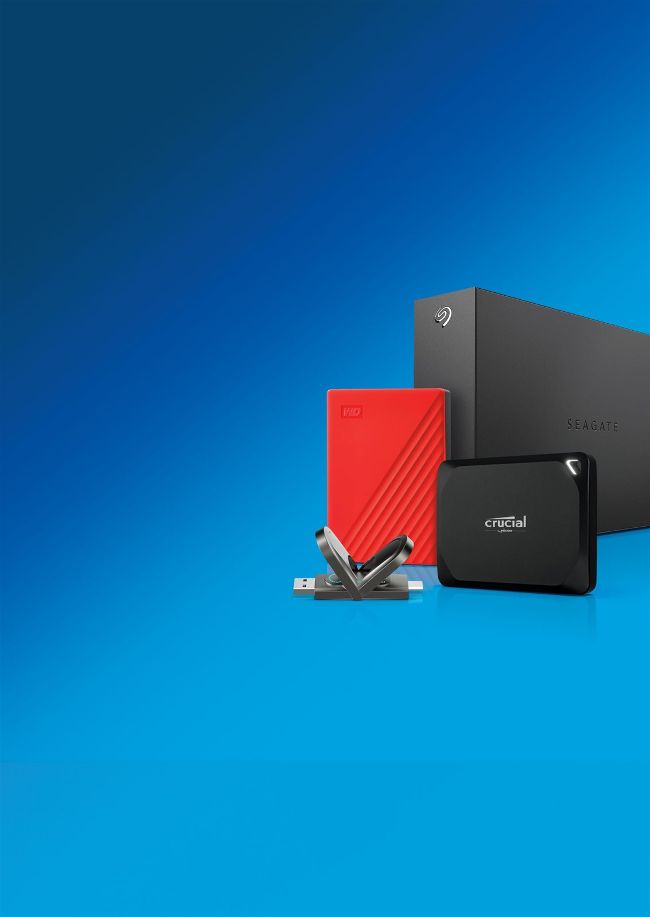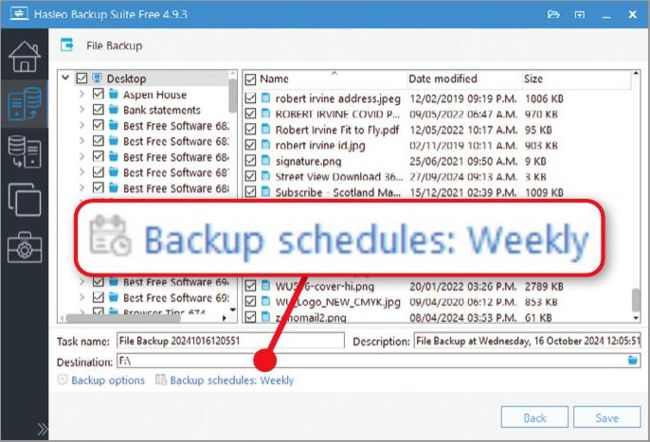COVER FEATURE
Why You MUST Buy... EXTERNAL DRIVES
Portable storage has never been faster, smaller or cheaper. Robert Irvine reveals the best things you can do with an external HDD, SSD and USB stick, and the best devices to buy

Backing up important files from your PC used to involve copying them onto CD or DVD (or floppy disk, going back even further). Not only was this a slow and laborious process, but the limited space offered by optical discs meant you could end up with teetering piles of them cluttering your desk. External hard drives were always an option, but they tended to be large, heavy and expensive, while the first USB sticks – though considerably smaller – were sluggish and low capacity. Thankfully, things have improved dramatically in the last 10 years and we’re living in a golden age of affordable portable storage. Higher capacities, faster speeds and much more compact designs have made external drives an essential addition to any home-computing setup. The trouble lies in deciding which one to buy from the hundreds of devices available, and whether you need a portable hard drive, SSD or USB stick – or all three.
WHAT YOU CAN DO
• Protect your system and data against PC disasters
• Access important files and favourite software on the go
• Encrypt your drive to thwart thieves and snoopers
• Save money on expensive online-storage plans
• Transfer large files between devices in just a few seconds
• Back up important data across multiple drives
In this feature, we reveal the best things you can do with an external drive, other than the obvious benefit of backing up data. We also explain the main differences between portable hard drives, SSDs and USB sticks, and recommend the best models you can currently buy, to suit your budget, storage requirements and performance expectations.
NINE REASONS TO BUY AN EXTERNAL DRIVE
Back up your files and system
Backing up the contents of your PC’s internal hard drive or SSD is the primary reason to invest in an external drive. This protects your files and folders against system corruption, malware infection, accidental deletion, hardware damage and theft.
Most external hard drives and SSDs come with their own software for scheduling automatic backups at the time and frequency of your choice. If not, you can use the File History feature in Windows 10 and 11 to back up files to the external drive (see page 57), or third-party backup software such as Hasleo Backup Suite Free (www.snipca. com/52454 – see screenshot below).

Back up files to external drives automatically using Hasleo Backup Suite
The large capacity of external drives means they can also store a backup of your entire system, including all its files, software, settings and disk partitions. This system image will allow you to restore your version of Windows to complete working order in the event of disaster.
Transfer large files in seconds
Sharing large files from one PC to another via email or by uploading them to online storage can take ages, and the service you use may impose a limit on file size. With an external drive, you can quickly transfer entire video, photo and music collections to a new device in a matter of minutes rather than hours – especially with an ultra-fast SSD. For example, copying 200GB of data to a drive with a 1,000MB/s transfer rate will (theoretically) take about half an hour.
You can also free up valuable storage on your computer by moving the biggest space hogs to an external drive. This is particularly beneficial on older PCs and laptops that may slow down when they approach full capacity.
Access your files on any device
The modest size of most external drives makes them easily portable, so you can carry around all your important files and access them on any PC, simply by connecting the drive to a USB port. External SSDs and USB sticks can be used across different operating systems – including Windows, macOS and Linux – provided they’re formatted using the exFAT file system (see screenshot below), and even some smart TVs and games consoles.
Although online-storage services also let you access files from anywhere, they require you to have an internet connection. External drives give you offline access to your data at any time, without relying on a network connection. Combined with their portability, this makes them ideal for taking on holiday and using in areas with unreliable internet.